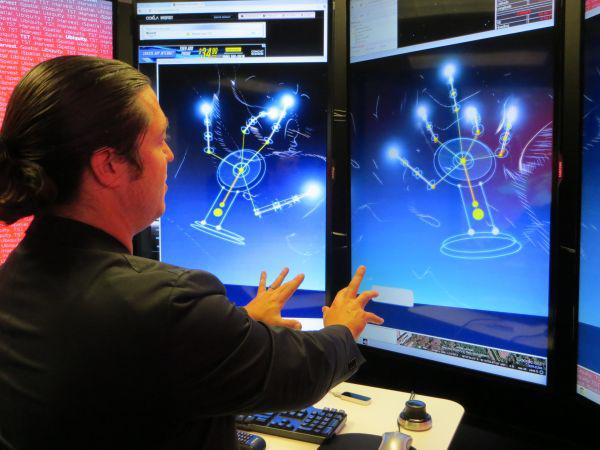Google Glass Sharpens View of Wearable Computer Future
Cutting-edge consumer technology that once seemed possible only in science-fiction films now is in the hands of experts and innovators working to solve government challenges. From wearable mobile devices to a sensor that lets you control your screen with the wave of a hand or lift of a finger, these tools could one day be key to serving soldiers in the field.
Thermopylae Sciences and Technology, based in Arlington, Virginia, is one defense contractor pushing the technology envelope to apply commercial solutions to government problems. By participating in the Google Glass Foundry and Explorer programs, which make technology available to early adopters, the company recently acquired several pairs of Google glasses. Through this program and partnerships with other technology companies, Thermopylae now is experimenting with how wearable computers could integrate with its current and future products.
“What we’re able to do is to start prototyping and working with these devices in conjunction with the tools and technology we’re developing for actual government programs,” John-Isaac Clark, chief innovation officer for Thermopylae, says. As part of the Google Glass effort, “We can get early access to some of these technology improvements and then wonder … how might this technology let me interact with the user in a different way altogether?”
Clark, brother of Thermopylae President A.J. Clark, is a self-proclaimed geek and wears the glasses up to eight hours per day to explore the capabilities. While Google focuses on the commercial and consumer product spaces, Clark believes Google Glass sheds light on the potential for wearable computers in the military realm. “Eventually, while it is incredibly unlikely to be Google Glass, a soldier will have something like this.”
A wearable computer would make it easier for the military to push and pull data from the device to a system or network. “One of the things we can do now is I can capture photos and take messages from the field with a handheld device, and I can push those back into other systems. What we’re thinking is, why should I have to go to my device to take a picture … how can I do that more easily?” With wearable computers, a single voice command could snap an image, and a swipe of the finger could send it off.
This hands-off communications approach could serve many purposes in the future. A member of military or law enforcement with a head-mounted device like Google Glass could send an image of a person in front of them off for validation without reaching for a device, looking down or breaking the flow of work. “We’ve even found commercial use cases,” says Clark. During reconstruction efforts in Afghanistan, fuel theft has become rampant due to issues with driver validation. “Someone will say, I’m the driver and I need fuel ... and it’s basically a very polite carjacking because they have no way to identify anyone.” A wearable computer could hypothetically allow for facial recognition of the driver on the spot.
Video streaming with a wearable, head-mounted device also could benefit both the military and commercial sectors. Google Glass allows for Google Hangouts, where a participant can see the other person’s view. “You can see what I’m seeing, so you can imagine the usefulness of that from a situational awareness perspective … what if the operators on the ground could have people watching what they’re seeing and giving them feedback,” offers Clark.
“Pushing and pulling information is really what it comes down to, and with the Glass factor, it’s really doing that in a non-obtrusive way.”
Thermopylae is working to see how its current offerings could integrate into the wearable computer space. Its core products include iSpatial, a geographical data management tool, which uses Google Earth as the base, and Ubiquity, a mobile platform that allows users to create an app using widgets to layer data. With Ubiquity, for example, the company is looking at how to take the building of applications and to understand the way alerts and notifications or user interface layouts might work with wearable computers.
“Whether it’s a product like Glass or something in a rifle scope or a monocle … I give Google a lot of credit for building so much awareness,” remarks Clark. Other companies also are leading the charge toward wearable technologies and targeting the government space, including the Oculus Rift Virtual Reality Headset and the ODG X5 Glasses.
And tapping commercial products for other uses certainly isn’t limited to wearable computers. The company also has been experimenting with Leap Motion, a device the size of a pack of gum that allows users to manipulate information on a screen with hand motions—pinching, pulling and zooming in the air. Leap Motion already is available for purchase and costs $80, and it could have many applications, from video games to the work place.
Digital Media Editor Rachel Lilly got a first-hand look at Google Glass. Read about her experience on SIGNAL's blog.





Comments